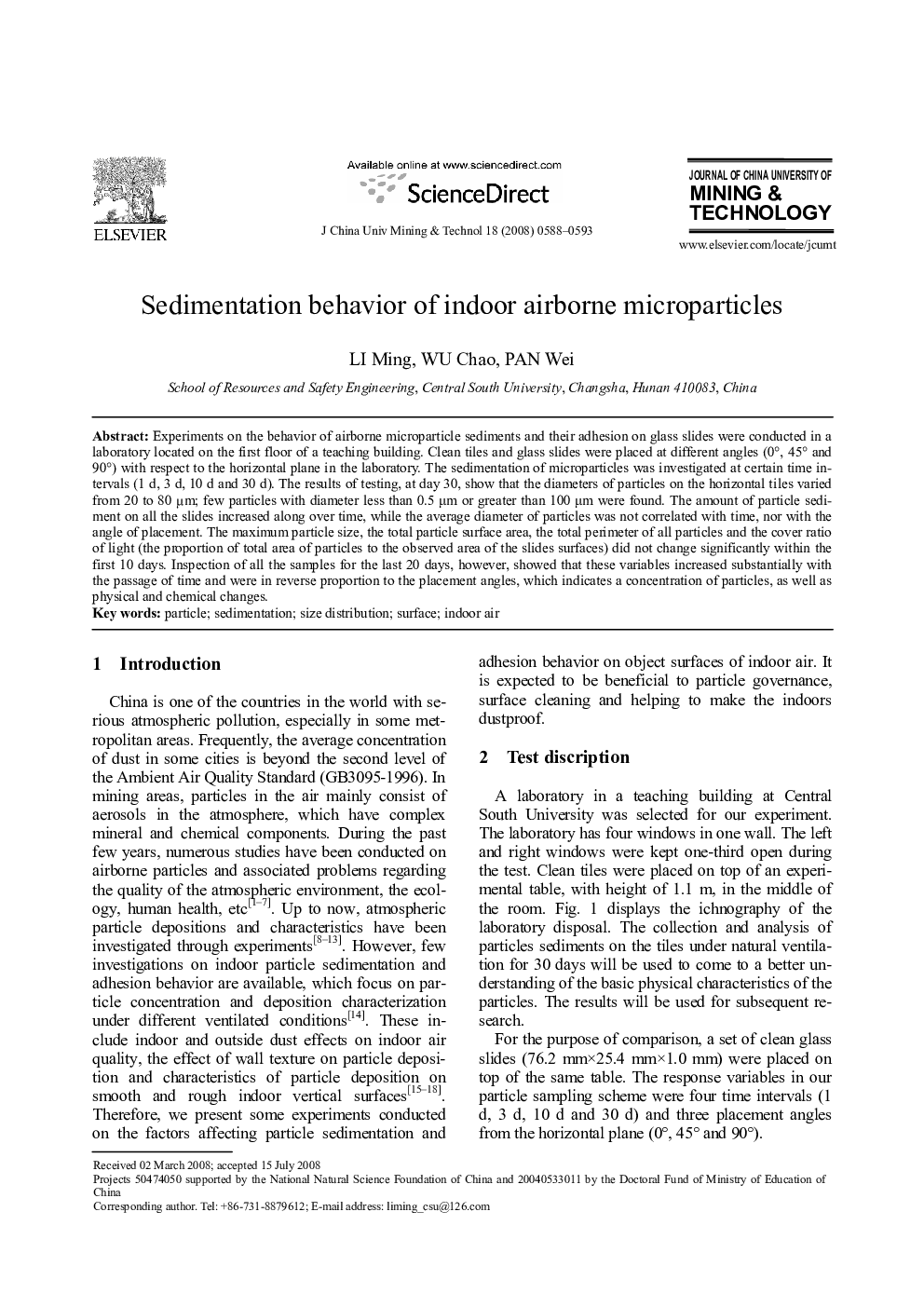| Article ID | Journal | Published Year | Pages | File Type |
|---|---|---|---|---|
| 283899 | Journal of China University of Mining and Technology | 2008 | 6 Pages |
Experiments on the behavior of airborne microparticle sediments and their adhesion on glass slides were conducted in a laboratory located on the first floor of a teaching building. Clean tiles and glass slides were placed at different angles (0°, 45° and 90°) with respect to the horizontal plane in the laboratory. The sedimentation of microparticles was investigated at certain time intervals (1 d, 3 d, 10 d and 30 d). The results of testing, at day 30, show that the diameters of particles on the horizontal tiles varied from 20 to 80 μm; few particles with diameter less than 0.5 μm or greater than 100 μm were found. The amount of particle sediment on all the slides increased along over time, while the average diameter of particles was not correlated with time, nor with the angle of placement. The maximum particle size, the total particle surface area, the total perimeter of all particles and the cover ratio of light (the proportion of total area of particles to the observed area of the slides surfaces) did not change significantly within the first 10 days. Inspection of all the samples for the last 20 days, however, showed that these variables increased substantially with the passage of time and were in reverse proportion to the placement angles, which indicates a concentration of particles, as well as physical and chemical changes.
